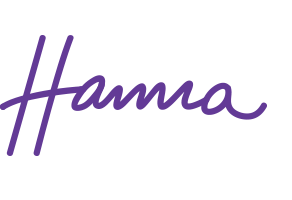Seed Crackers GrainBrain Style
Have you ever tried seed crackers?
All you wanted was a little crunch in your life, but all you got was disappointment.
Were they a little… papery? Or were they full of chemical stuff, or stuff that you can’t/don’t want to eat?
I’m making you a very happy bunny today.
Almost everyone who has tried these seed crackers has asked for the recipe. I’ve even ended up selling quite a lot of it!
So today I’m going to be super nice and share it with you so that you can make it yourself! ! It’s safe to say that this will be the only crack(er) recipe you’ll ever need.
And, what’s fantastically awesome about these is that they are completely allergen free! No grains, no gluten, no dairy, no egg, no soy, no funky chemical stuff. Well, unless you’re allergic to seeds (sesame?), or crunchy seed crackers!
The recipe is actually super simple, and can be tweaked exactly to your liking.
GrainBrain’s Seed Crackers
3,5 dl (1,5 cups) sunflower seeds
1 dl (0.4 – 0.5 cups) flaxseed
1 dl (0.4 – 0.5 cups) sesame seeds (can be swapped if you’re allergic, see below)
0,5 dl (0,2 cups) pumpkin seed
3 tbsp psyllium seed husk
a pinch of salt
2-3 tbsp olive oil
4-5 dl (1,7 – 2 cups) water
- Mix all the ingredients carefully. I like to mix all the dry ones first, then add the olive oil and mix again. Lastly, I add the water. Mix!
- Let it rest for 10 minutes. Put the oven on 150 degrees celsius (300 fahrenheit).
- Bake half of the mix out between two sheets of parchment paper. Use a rolling pin to flatten it out. The mix gives you two baking sheets, depending on the size of your oven, of course.
- Remove the upper layer of parchment paper, and cut the dough into cracker sized pieces before putting it in the oven.
- Let it dry in the oven for 55 minutes each.
Et viola! Enjoy with some butter and your favourite sandwich topping.
Nutrition Info:
(Whole batch)
Carbs: 55 g
Protein: 36 g
Fat: 114 g
(If you divide the crackers into 24 pieces per baking sheet, 48 pieces total)
Carbs: 1 g
Protein: 0,75 g
Fat: 2,4 g
These are super filling and contain so much good stuff, like fibre, Vitamin B, Vitamin E, Calcium, Iron, Copper, Magnesium, Manganese and Zinc.
The only problem you’re going to have is to stop eating these…!
Customise it (or Pimp my Crackers)
You can add all kinds of herbs and spices to it to make it your own and to add variation.
Here are some ideas: chili flakes, Italian/French herb mixes, sea salt, pepper, paprika spice, taco spice mix (make sure it’s a clean one), fresh garlic, rosemary, oregano or basil, or even cinnamon or cardamom to put a sweeter spin on it.
I’ve also played around with adding and removing different seeds to the mix. I’ve added chia seeds and whole psyllium seeds, for example. This gives it a completely different taste and texture.
I’ve also used a chili-garlic infused olive oil instead if the plain one. There were some sparks flying off of that one! J
Please try this out, it’s definitely worth the longer time it takes to make it than just picking any old crap up from the store. And don’t forget to leave your comment below of what you think of it!

